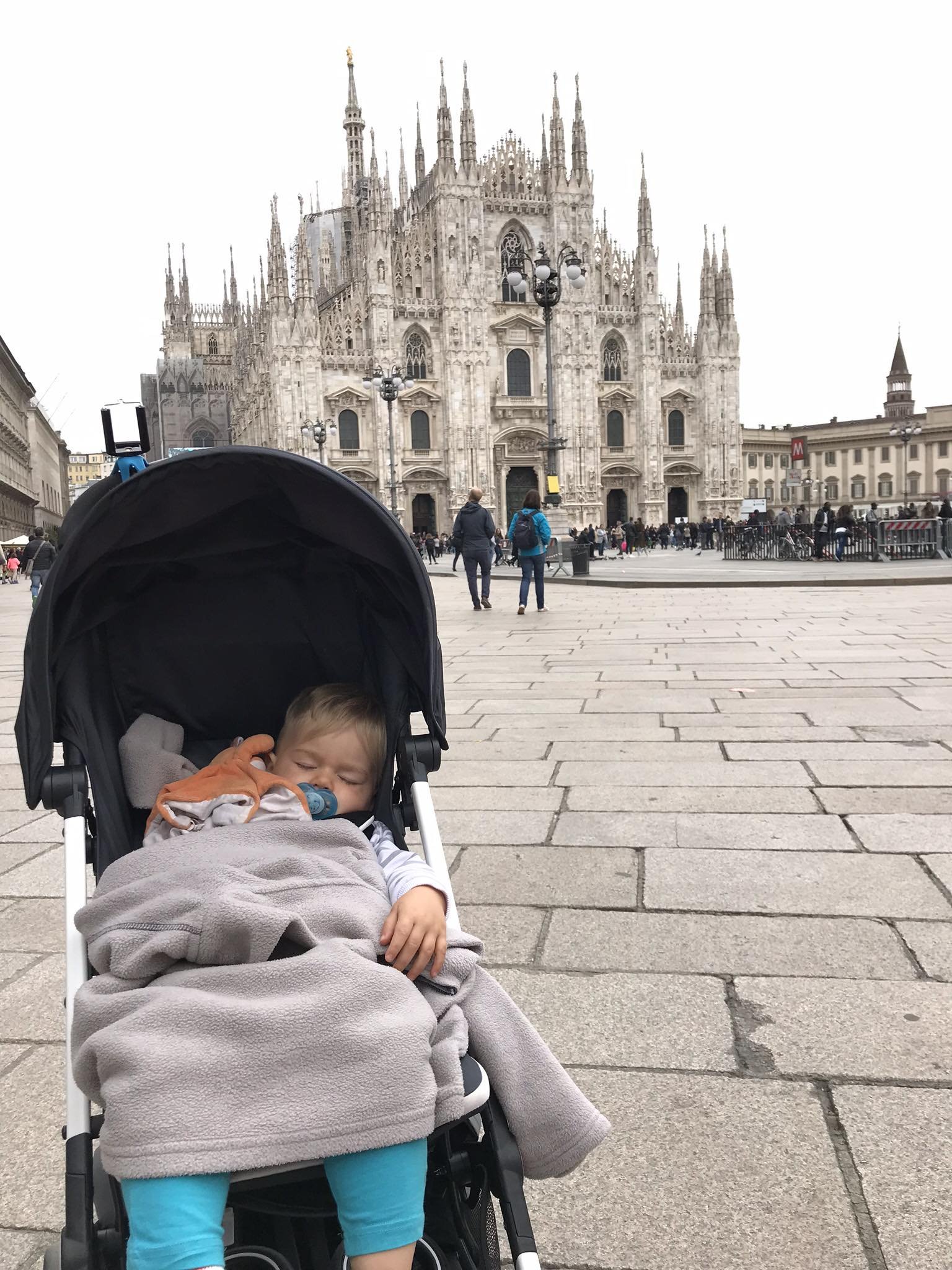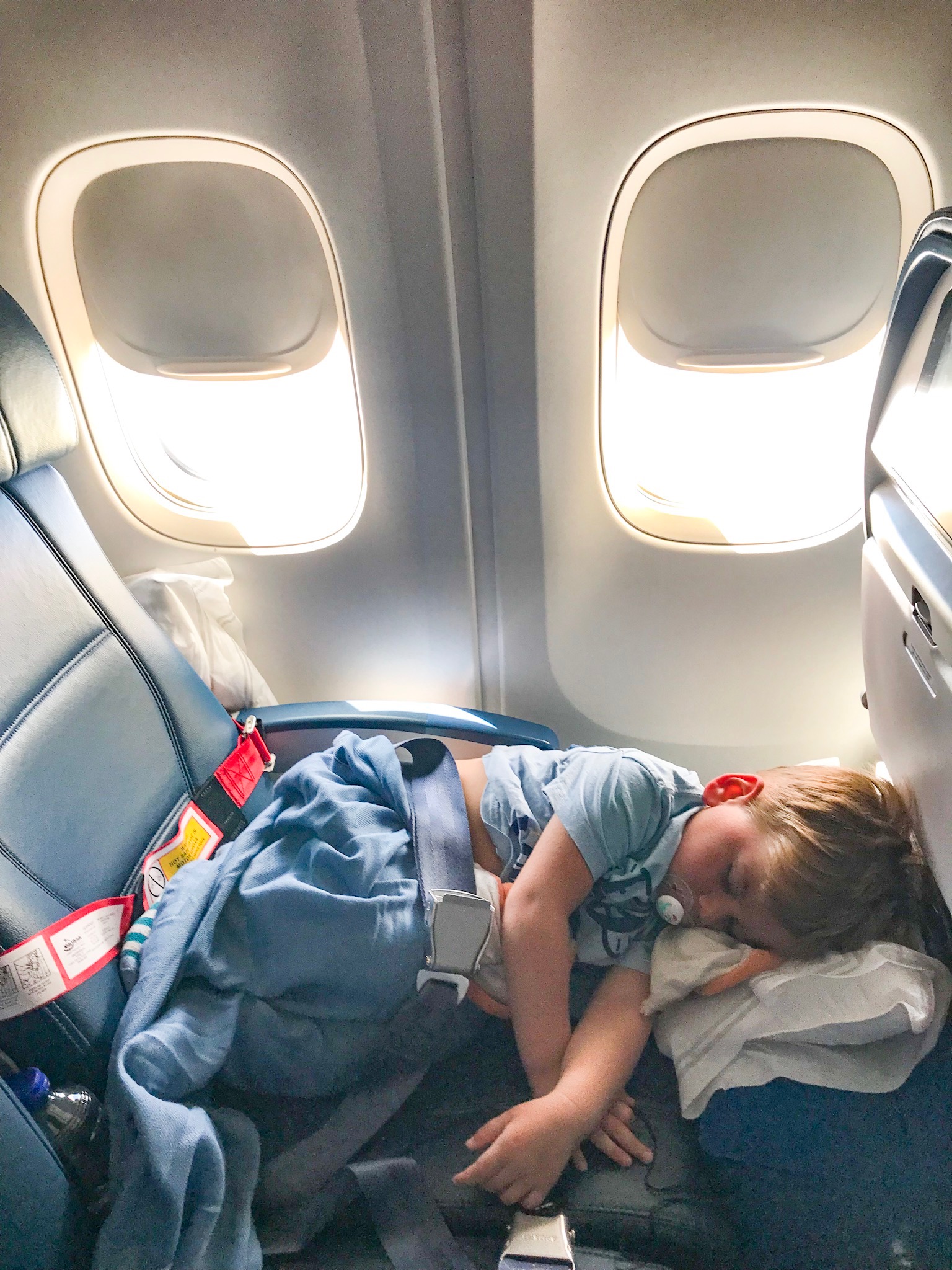Top 5 Ways to Beat Jet Lag in Kids
/We’ve been taking our kids overseas since they were babies and we’ve learned a lot about what works to help jet lag and what does not!
If you’re looking for ways to beat jet lag in kids, you’re in the right place. In our experience, kids with jet lag can make the first few days of a trip difficult, especially when a jet lag toddler won’t sleep at night, but wants to nap all day. Comforting a jet lag baby can make a jet lag parent even more exhausted. It is a vicious cycle and can really hinder the first few days of family travel.
A few of the most common jet lag in toddlers symptoms are:
Difficulty initiating sleep in the new time zone (going east)
Early awakening
Fractured sleep patterns.
Increased fatigue and irritability.
Lack of interest in food.
Altered bowel habit.
All of these signs of jet lag can be lessened, mitigated, or avoided altogether by preparing for jet lag properly.
we landed in prague the morning and headed out after getting our things settled in out airbnb. We spent the day touring around to help us all adjust our circadian rythms.
In the past, we have spent days upon days living with no sleep, trying to enjoy ourselves in a new country, but failing miserably. We have also arrived at a destination 8 hours ahead of our normal time zone with no jet lag at all -- a miracle! Through trial and error, we have found 5 of the best ways to help overcome jet lag in kids.
READ NEXT: 12 Tips for Surviving a Long Haul Flight with Kids
Here are the Best Ways to Beat Jet Lag in Babies and Toddlers
Both kids running wild at the duomo in Milan the very first morning. We weren't out of the apartment until around 9:30 after everyone slept in and took their time getting ready. this was the easiest jet lag tranistion we've ever had.
1) Choose the flight schedule that is going to allow you to keep your normal home schedule. For instance, when traveling from Florida to Milan, Italy -- we chose an evening flight. This allowed our family to rest while in flight. However, it did push the kid’s bedtime back by several hours. Originally, I was worried, but it ended up being a great start to the new time zone transition. When we arrived in Amsterdam, it was mid-morning local time. We had a layover followed by a short flight and a short train ride. By the time we arrived at our Airbnb, it was evening. We unloaded our stuff, ate dinner, and put the kids to bed around 7 PM local time, which is their normal schedule at home. The kids slept through the night the very first night which made the first day of our time in Milan so much more enjoyable. (Ages 17 months and almost 3 years)
**For an East to West time zones change, we prefer to take an earlier flight (morning), so that we arrive in the afternoon or evening when everyone is tired -- making the timezone transition much easier. Child jet lag returning home can last a bit longer due to the daytime arrival, however, it can still be lessened.
we hit the ground running in albania and it meant there were a few meal time naps for the kids, but being out in the air and crowds helped them adjust much quicker to the time change
2) Exercise before your flight or on arrival. For a West to East transition, we let our kids play hard all day. For instance, my husband will the kids to the park two times during the day before we leave for the airport. The kids will play so hard, take their usual nap, then go back and play again. They will be exhausted, but not miserable in the airport. When looking for ways to cure jet lag quickly, exercise and physical activity are at the top of the list.
***For a morning flight, we let the kids run and play inside the terminal. While we don't have as much preflight playtime on these early flights, we do wake them up earlier than usual to start the time zone transition.
The same thing is true for adults trying to figure out how to beat jet lag; exercise and physical activity will help you fall asleep faster and cure jet lag quicker.
The baby still naps 1-2 times a day, so he napped twice on our Daytime flight from Paris to Atlanta -- our daughter "rested" for a while
3) Keep the routine. When trying to figure out how to deal with jet lag in kids, I believe keeping a familiar routine is crucial. Humans are creatures of habit, so moving through the same nighttime routine while traveling as you would at home can trigger the brain to begin to settle for bed.
In Flight: We are all about a nighttime routine. While we are open to changing it occasionally, our kids are used to dinner, bath, then heading toward their bed at 7 PM. So, why would we change it for a flight? On a West to East long haul, we typically wait for the dinner service, then "bathe" them with body wipes, put everyone in PJs, set up their beds, and put them to sleep. We have continued this routine from babies to big kids. We all know that sleeping is the best thing for jet lag, so grabbing some sleep on the plane is crucial!
On an East to West, we keep our typical nap routine during flight. For older children who do not nap any longer, I usually let them watch movies for the flight just like I would do.
RELATED: Kid’s Travel Beds: Size Matters
this is a bassinet on a long haul flight from atlanta to paris on delta
4) Get comfortable. We have tried many sleep configurations, but the inflatable footrests have always provided the best rest on long flights with kids.
When traveling with toddlers (and babies), the best in-flight sleep configuration we have found is to use inflatable travel pillows to get your little ones to sleep comfortably. We inflated one for each kid to extend their seat which gave them each enough space to lay down flat. We did our normal bedtime routine for each kid and our almost 3-year-old slept 6 hours straight while the baby slept about 5.5 hours straight. It was a huge win. I highly recommend any parent flying with kids to invest in one of these pillows.
sometimes the baby will only want to sleep in your arms
If you are flying with an infant in arms, I suggest asking for one of the bulkhead seats to get the baby bassinet or asking the flight attendant if there are any open seats you can be moved to where the baby can have it’s own seat. However, if your baby loves to be held to sleep, then hold them! Ensuring the baby does not get overly tired is going to help you prevent a jet lagged baby and possibly stop a jet lag baby crying at night. Jet lag in babies is hard to overcome if you don’t get ahead of it.
sleeping on the plane is not the only option. we often sleep in airport lounges! This is the Dallas centurion club where we had an 8-hour layover.
using the inflatable foot pillows to extend the seat so the kids could lay down on a long haul from atlanta to amsterdam-- you can still use a seatbelt in this configuration (see photo from tip 3)
5) Supplement. **Before you read this paragraph, please know I am not a doctor and I strongly suggest you consult your doctor before giving children any supplements or medications*
I get asked a lot about what to take for jet lag or to get children to sleep on an airplane. My normal response is - nothing. I do not give my kids supplements on airplanes and I definitely do not ever give them Benedryl for sleep. However, once we are on the ground, I may give them melatonin as one of the ways to get rid of jet lag.
For older toddlers and big kids: On the first couple days after a long haul trip, we sometimes supplement with melatonin for kids while everyone is adjusting. However, we typically don’t need to do this on trips going West to East because can sleep on the plane and usually adjust faster and easier. However, heading West to East there always seems to be child jet lag returning home.
For babies: We do not supplement. I typically nurse on demand (fed on demand), rock the baby, or hold the baby to comfort them back to sleep at night. Keeping a familiar routine always helped deal with jet lag in babies much quicker than if we didn’t.
For adults: As parents, we also supplement to help ourselves adjust. I really like these ZZZQuil Melatonin gummies because they also have Ashwagandha which helps us to relax, fall asleep quickly, and sleep deeply. This solid sleep cycle is the best thing for jet lag.
We hit the ground running in milan and even tho the kids napped a little on the go during the day, being out and about helped regulate the circadian rythm a little faster.
If you still find yourself in the throws of jet lag kids, here are several ways to help.
My son using his inflatable pillow to take a nap on our Day flight from Rome to Detroit
Keep the lights dim or off for the middle of the night wakings
Keep the stimulation at night minimal
Move the schedule day by day instead of huge leaps. (i.e. Day 1: bedtime at 5 pm, Day 2: bedtime at 6 pm, etc)
Minimize naps -- our baby wanted to sleep 12 hours a day in his carrier on his first overseas trip, so we had to consciously put him in the stroller and keep him awake to help him adjust.
Keep everyone very hydrated! Hydration is a key factor in preventing and beating jet lag in kids!
Make the best of early wakings -- be the first to tourist attractions or photo opportunities.
Be willing to change your plans to accommodate an overly tired child. We have canceled entire excursions to be sure our kids were feeling their best. It can be hard, but the rest of the trip will suffer if they are constantly tired. We found the best park in Prague by changing our plans to accommodate our jet lagged baby. Turns out, it was beneficial to all of us and the days and nights were much easier after that.
How to deal with jet lag in babies: Patience and small changes. Babies won’t understand a sudden 8 hour time change, so the best way I have found is to move their schedule an hour a day for the 2-4 days leading up to the trip to adjust their sleep/wake cycles. Then on the ground in the new place, I try to keep them awake as much as possible during the daytime hours without making them miserable.
the big kids do like a sleep mask on long haul flights
Like everything that comes with parenting, each child is different. Each situation is different. The best way to overcome jet lag is to take it one day at a time. It is temporary. The general rule is it takes as many days to adjust as time zones you've traveled, so 8 hour time difference means a full 8 days before the average person is adjusted. The best way to handle jet lag is to expect it and to take steps to minimize jet lag if possible. Remember, jet lag in children is going to happen and it is a normal part of the family travel experience!
As always, we love to hear your tips and tricks for minimizing jet lag!
Pin Me:
AMAZON AFFILIATE DISCLOSURE:
There are links on this site that can be defined as “affiliate links”. This means that I may receive a small commission (at no cost to you) if you subscribe or purchase something through the links provided.
Big Brave Nomad is a participant in the Amazon Services LLC Associates Program, an affiliate advertising program designed to provide a means for website owners to earn advertising fees by advertising and linking to amazon.com, audible.com, and any other website that may be affiliated with Amazon Service LLC Associates Program.





































